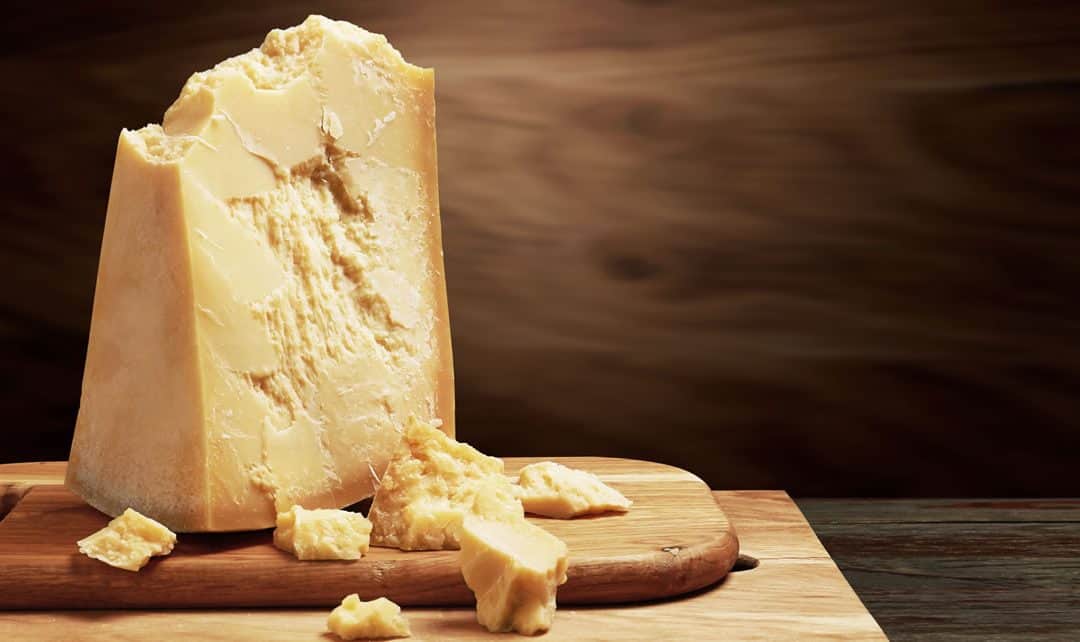The tuile parmesan lacy basket nests can be made ahead of time, but they are at their best crunchy bite when draped to shape and immediately filled with whatever suits your fancy. Best not to try to make tuiles on a very humid day. They don’t dry quickly and might get soggy.
Preheat oven to 400 F. No oven thermostat is 100-per-cent reliable, no matter how costly the stove, because electronics are simply not reliable. Invest in a good oven thermometer or two less costly ones so you can counteract by adjusting any oven temperature discrepancy.
Another adjustment you might need to know: if you are baking using Pyrex or other glassware, drop your recipe called-for oven temperature by 25 degrees for better results. Some recipes such as fruit cake or fruit-filled pies have the best results when baked on the oven bottom rack. Most other recipes prefer the middle rack centred side to side. Take into consideration that the temperature at the back of any oven is mostly higher than temperatures at the front door. Position your independent thermometers in the middle of the oven for the best guide.
With your oven set to 400 F or whatever works to get it to that close to true number, prepare a baking sheet covered in parchment paper. Tuile basket nests need high heat to quickly bake, giving the best and most malleable results. Work quickly.
You can choose from several cheeses as individuals or mixed. Perhaps try BellaVitano cheese called Raspberry Ale or maybe use their Espresso cheese (grates a little like a medium-hard white cheddar).
Using the small-hole side of a box grater and a large platter, grate the cheese. There’s no measure. Grate how much you have. If you have leftovers, freeze the grated cheese to use another day. Toss to separate the cheese and refrigerate, covered in a clean dry kitchen towel for 10-15 minutes to tighten the cheese a little; in a hot kitchen the grated cheese might clump. You need to keep the gratings separated.
You can make minuscule tuiles or some in a very large cookie shape, perhaps only three mounds offset per large parchment lined baking sheet (they spread). The minuscule tuiles, maybe as little as two-inch diameter or even less (they don’t all have to be exactly equal in size) can be poked into the side of a salad serving or served as an amuse bouche. Or use them to decorate the sides of a polenta layered-cake when mounted in my cream cheese butter icing coating. An unusual presentation for sure. So purely simple, it’s a treat for the eyes as well as the palate.
When you fill a medium-size (perhaps draped over a ramekin to shape) tuile nest with savoury sabayon (perhaps made using Italian Marsala wine), you might want to tuck a filled filo cigar in at the edge.
You might consider first wrapping the cigar in paper-thin fresh prosciutto wound over a ribbon green onion the full length of the cigar.
You could even consider first putting a dollop of my caramelized onions in the tuile basket nest, then a layer of the savoury sabayon.
Or you could add a piece of lobster claw meat off-centre in the sabayon drizzled with homemade lobster oil. Make it by oven-roasting shells of lobster (on high heat on a rimmed baking sheet in a hot oven), crab shells, shrimp shells that you have collected from other recipes and frozen in a zip bag and then gently boiling the roasted shells in Mazola corn oil. Strained and stored in a sterilized glass jar with a tight fitting lid, the lobster oil will keep for ages, refrigerated.
Toasted shredded unsweetened coconut flakes marry nicely with the sabayon as a topper if you use chopped toasted coconut shrimp in the savoury sabayon mounded in the parmesan lacy tuile nest.
Always needing a little something green on a plate, a small handful of fresh celery leaves nearly matches the colour of the sabayon in the lacy crunchy tuile cheese nest. To add a little more colour to the plate, a few tiny raw radicchio leaves serves up nicely on the side with the celery leaves for contrast.
You might find a Chianti, red or white, pairs well with the tuile nests.
Over the moon desserts or dessert tapas
If you give up sweets for Lent, perhaps celebrating Easter with these delights will make for an especially enjoyed treat.
Chop a cup of Medjool dates and add a cup of chopped macerated brandy-marinated black mission figs. Add a cup of pitted fresh juicy Italian blue plums, skins on. Stir in two cups of granulated sugar and the juice of a half large lemon along with the zest of an orange.
Cook in a stovetop pot on low heat until mashable (but al dente). You want to retain some texture.
Stir in a half cup of Benedictine liqueur or Mampe Halb and Halb monks’ bitters. Simmer carefully, stirring constantly until the mixture is combined but not mushy or jam consistency. Add a pinch of salt.
If you have homemade candied mixed citrus rinds stored in a pantry sugar jar, chop a half cup and add to the pot. Or add a tablespoon of my bitters Kumquat marmalade or your favourite.
Spread your favourite grilled or toasted crostini bread with your favourite cream cheese; Celebrity plain creamy goat cheese is really terrific. Top the cheese crostini with the fresh fruit mix at room temperature or refrigerate, covered airtight for use later.
For a wonderful french toast, top the egg wash fried bread with the fruit mix. Maybe make french toast using leftover frozen Christmas fruitcake or one of your loaf pan breads (or baked in the round in the old coffee-tin) such as date bread, banana bread or even orange pound cake. Thick fresh brioche is always wonderful.
If you have homemade ice cream, a scoop on top of the fruit on the french toast is wonderful!
Homemade ice cream
No ice cream? Consider making some even if you don’t have an ice cream maker. Whip a large container of full fat cream until very stiff. Add a quarter cup of granulated sugar and a splash of vanilla.
Stir in a quarter cup of Black Bacardi Rum (Puerto Rican) with its “everything old is new again” piquant flavour sporting the undertones of charred oak, orange peel and sweet molasses.
Stir in a half cup of rum-marinated plumped golden raisins along with a generous amount of the room-temperature mixed fruit confit (maybe a cup or even two).
Freeze in a large metal bowl or in a loaf pan lined with cling wrap large enough to pull a cover over the pan, until you can cut thick slices or scoop the frozen homemade ice cream.
Hint: Using loaf pan of frozen cream, cut thick slices and set atop your french toast and cover with the fruit. Or put a rather thick ice cream slice between two freshly made large waffles and top with the fruit mix.
When ready to eat, offer a little dish of hand-cultured Amagansett Sea Salt to enhance all the flavours as a special texture treat for your tongue. You could sprinkle the dish with homemade candied nuts from your pantry jar, whole or crushed.
As an aside, you might like to freeze a thick block of plain ice (not cubes) in a spring form pan. Put the ice block in a pretty, deep platter dish lined with plastic wrap on the bottom. On top of the ice, place individual half walnuts, leaving a little space between each and serve right away. The Mediterranean cultures apparently enjoy their walnuts, in particular, served “on ice.” Seems the ice enhances the natural fat flavour in the walnuts. And walnuts are a healthy treat; maybe sprinkle the nuts with grains of Amagansett Sea Salt. You might want to put a metal baking sheet in the freezer and cover with a plain white cotton or linen large napkin and place under the ice block platter to help keep the ice solid briefly. If you are serving on a good wooden tabletop, put the cold metal tray on a thick cheese serving block to protect the table.
In addition you might enjoy a grouping of mixed nuts: maybe candied walnuts, almonds and hazelnuts clustered with fresh picked juicy blueberries, covered in melted, best-quality dark chocolate made in small mounds, sort of like a nutty fruit tuile. You could use melted white chocolate, which of course isn’t really chocolate. This is a spectacular treat.
Spritz with cold French St. Germain cordial just when ready to serve. Refrigerate, covered, so the chocolate doesn’t take on a white moisture hue and serve as soon as politely possible. For brunch or dinner, you might pair with a stemmed crystal shot glass of the French Elderflower cordial.
Best to make plenty more than you think you will need.
You could top each fruit mix covered ice cream serving with the chocolate covered fruit nut tuiles.
You might want to try presenting the chocolate fruit nut tuiles on ice, as you do the walnuts, with maybe a small bunch of pretty eye-candy greens covering the ice block. (Shredded frisee makes an unusual presentation green.)
Chocolate rum raisin pudding
Bring two cups of half and half cream to a near simmer. Stir in a cup of granulated sugar. Add a pinch of kosher salt and sprinkle two tablespoons of sifted cornstarch over the warm cream. Whisk gently in a figure eight movement. And immediately stir in a half cup of dark chocolate powder. Keep heat low and continue stirring until thickened to coat a spoon. Remove the pot to an unheated burner, continuing to stir. Temper two whisked egg yolks with the warm pudding and stir the eggs into the pot. Return to the low-heat burner.
Add a half teaspoon of real vanilla or a bit of vanilla bean and a half cup of Black Bacardi Rum plumped golden raisins and their marinating rum-raisin liquid. Continue stirring on medium-low heat until thickened. Remove from heat. Add two coins of your frozen marmalade compound butter log. Gently fold in the butter continuing to stir, just long enough to incorporate.
Using a ladle, pour the room temperature thick chocolate pudding servings into wide-mouth old-style champagne/sherbet stemmed crystal glasses. Or serve in the inner bowl of a shrimp cocktail double glass dish on a bed of crushed ice.
Top with a stiff dollop of dark chocolate Chantilly cream and add one of your fruit nut chocolate tuiles to finish the presentation. Wrap a plastic wrap tent over each serving until ready to serve on a glass see-through plate resting on a large charger plate. A nice finishing touch, on the plate, is a fanned group of three fresh orange segments and a green leaf to follow the orange undertone in the rum.
Compliments of: © “Spirits in My Kitchen”: Lady Ralston – Cooking with Bouquets and Aromas
The working title for Carolyne’s Gourmet Recipes cookbook is From Lady Ralston’s Kitchen: A Canadian Contessa Cooks. This kitchen-friendly doyenne has been honoured and referred to as the grande dame of executive real estate in her market area during her 35-year career. She taught gourmet cooking in the mid-70s and wrote a weekly newspaper cooking column, long before gourmet was popular as it is today. Her ebook, Gourmet Cooking – at Home with Carolyne is available here for $5.99 US. Email Carolyne. Scroll down to the comments at each recipe column. Carolyne often adds complimentary “From Lady Ralston’s Kitchen” additional recipes in the Recipes for Realtors Comments section at REM.
















